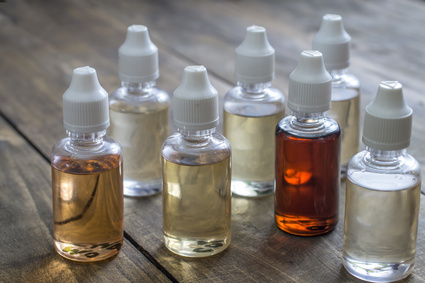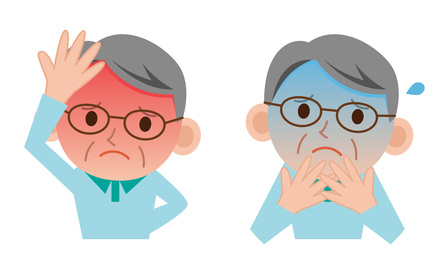
Nicotine Overdose and Vaping: What All Vapers Need to Know
How many times have you heard someone say something like this?
“Nicotine is more poisonous than cyanide!”
“Just half a teaspoon of e-liquid could kill a child!”
“Nicotine is highly toxic in any form!”
I lost count a long time ago, but statements like this still bother me.
The implication is clear: vaping delivers nicotine to users, and nicotine is highly poisonous.
It’s the sort of thing that makes vapers concerned about nicotine poisoning or nicotine overdose from vaping, and may make smokers wary about switching to vaping.
So should vapers be worried about nicotine overdose? What are the symptoms of nicotine poisoning you should look out for? And if the worst does happen and you’ve consumed a dangerous amount of nicotine, what should you do?
Contents
- The Toxic Dose of Nicotine: Shattering the Myth
- Signs You’ve Had Too Much Nicotine
- Nicotine Poisoning Symptoms
- Can You Get Nicotine Poisoning by Vaping?
- What Could Actually Happen When You’re Vaping
- The Risks of Ingesting Nicotine
- The Risks of Getting Nicotine on Your Skin
- What to Do if You Develop Symptoms
- Conclusion: Nicotine is Poisonous, But Don’t Panic
The toxic dose of nicotine: Shattering the myth
The first port of call in any discussion like this is to address a long-standing myth.
Even today, many high-profile sources list the toxic dose of nicotine (the LD50 – or the dose that will kill about half of people exposed) as between 30 and 60 mg.
To put this in context of vaping, this would be about 4 ml of 12 mg/ml e-liquid.
d. Your body does process nicotine quite quickly (your blood nicotine levels will decrease by about half after two hours), so you’d need to consume it all basically in one go, which makes it still quite a tall order.
However, research by Bernd Mayer has shown this value for the toxic dose is utterly indefensible.
In the paper, he details several cases in which people consumed much larger amounts of nicotine with only minimal symptoms. On top of this, the lowest amount of nicotine found in the blood of people who died from nicotine was about 20 times higher than existing guidelines. Mayer revises the LD50 of nicotine to an estimated 500 to 1000 mg (or 0.5 to 1 g) on the basis of these results.
The remaining question is where did the “30 to 60 mg of nicotine will kill you” claim come from?
Mayer followed “circular and often misleading references” for a while and eventually hit on the source: a 1906 textbook from a German toxicologist.
On this basis alone, it’s clear that there are probably some issues with trusting this as a source. He was a respected toxicologist at the time, but medical knowledge has advanced massively in the century since it was published, so it isn’t surprising that repeating this claim verbatim with no further analysis isn’t the best idea.
The textbook cited some self-experiments performed in the 19th century, in which experimenters had the equivalent of a few cigarettes’ worth of nicotine and reported seizures and loss of consciousness. It goes without saying that there was probably some error in measuring out the dose: otherwise chain-smokers would regularly lose consciousness and have seizures.
So is nicotine more toxic than cyanide? No!
Also see: Our more in-depth discussion of Mayer’s paper.

The signs you’ve had too much nicotine
Vapers aren’t likely to suffer nicotine poisoning, but one thing that’s fairly common is having a little too much nicotine in one sitting.
The biggest tell-tale sign you’ve reached this point is feeling nauseous. You might notice this towards the end of a long vaping session, and it’s effectively your body telling you to take a break from vaping for a while.
In my experience, this nausea increases gradually, but it’s best to just take a break when you notice it starting. This way it never becomes too unpleasant, and you won’t experience the most important other initial symptom: vomiting.
This isn’t hard to avoid at all, and most vapers will have a break at the first sign of nausea even without being advised to do so. You might also get a headache if you’ve overdone it a bit, but nausea is the easiest thing to watch out for.
Nicotine poisoning symptoms
If you do continue vaping – or if you spill e-juice on your skin and don’t clean it off – then the symptoms could get a bit more serious.
You might experience:
- increased salivation
- stomach cramps
- diarrhoea
- headaches
- other symptoms like confusion or agitation.
It’s unlikely you’ll actually get to this stage by vaping, but it’s worth knowing the main things to look out for.
The most serious nicotine poisoning symptoms are even less likely to occur when you’re vaping, but are worth mentioning anyway.
These include coma and seizures (like our 19th century experimenters experienced), slowed heart rate and in the worst cases, respiratory failure. It might not be as poisonous as many sources claim, but it certainly is still poisonous.

Can you get nicotine poisoning by vaping?
For vapers, the most important question is whether this is actually something to worry about in practice. Could you vape your way to a nicotine overdose? Could you end up with any of the more serious symptoms of nicotine poisoning?
The simplest way to think about this (and to get a straightforward answer!) is to work out how much e-juice you’d actually have to vaporize in the space of a couple of hours to hit the minimum toxic dose of about 500 mg.
Using a 12 mg/ml e-juice, you’d have to vaporize over 40 ml to approach 500 mg of nicotine vaporised. Realistically, this just isn’t going to happen. For an 18 mg/ml e-liquid, you’d still have to vape almost 28 ml of e-juice in a couple of hours to even have a chance.
This is really only the first step, though, and the nicotine would have to get into the vapour and be absorbed by your body before it could poison you.
Estimating this aspect is a little tough, but a study from Dr. Farsalinos looked at experienced vapers’ plasma nicotine levels after using a mod and an 18 mg/ml e-liquid. The study didn’t use a modern device, but to answer the key question here it’s more than sufficient. The participants vaped 10 puffs in five minutes, then had an hour to use the device however much they liked.
After five minutes, experienced vapers ended up with about 8 nanograms (billionths of a gram) of nicotine per ml of blood. After the full 65 minutes, vapers plasma nicotine levels rose to 24.1 ng/ml, though the highest recorded concentration was 48.1 ng/ml.
In Bernd Mayer’s paper, he points out that the minimum plasma concentration recorded from somebody who died from nicotine overdose was 4,000 ng/ml (equal to 4 mg per liter).
Based on the vaper who got the highest plasma nicotine levels, his or her blood nicotine level would have to be over 80 times higher to reach the minimum lethal dose. To pile on yet more implausibility, they’d have to accomplish this in less than two hours. In other words, they’d have to get about 80 times more nicotine in their blood in under twice the length of time.
This should clearly show that vapers really can’t overdose on nicotine by using their e-cigarettes as intended. It seems unlikely that it’d even be physically possible to inhale as much vapour as you’d need to.
What could actually happen when you're vaping
So fatal nicotine poisoning from vaping seems incredibly unlikely, but you can still experience some symptoms if you vape too much. This is particularly likely you’re using higher-nicotine juices.
As a reviewer, I occasionally experience nausea and headaches on e-juice review days, but so far I’ve never vomited or had any other symptoms. This seems to be in line with other vapers’ experiences: some nausea, headaches and possibly jitters or confusion, but little else.
All of these are clear signs that you’re vaping too much, and if you get them regularly, you should consider reducing the nicotine level of your e-juice or just vaping less in general.
However, if you only occasionally have these symptoms, the best advice is to simply take a break from vaping until you feel better. In my experience, you’ll start to feel better fairly quickly.
The risks of ingesting nicotine
Although vapers don’t crack open a bottle of e-liquid and take a swig, the risks of ingesting e-juice are still worth considering. If children or pets get access to e-juice, they could potentially drink a dangerous amount. There are also cases where people have drunk e-liquid in an attempt to commit suicide.
The question is: how likely is nicotine poisoning if you drink e-juice?
A blog post on a German site looks at three cases of attempted suicide by drinking e-juice, and none of these were successful.
- One woman drank 20 ml of 18 mg/ml e-juice, for a total of 360 mg of nicotine consumed. She actually didn’t show any symptoms.
- Later, the same woman drank 50 ml of 30 mg/ml e-liquid, for a total dose of 1,500 mg of nicotine. This is above and beyond even the revised estimate for the toxic dose, but she only suffered nausea, a lot of vomiting and stomach pain.
- Finally, another case involved a 13 year old boy who drank 3 ml of e-juice (of unknown strength) to try to commit suicide, but only suffered nausea and shivering.
These cases, and particularly the second, show that drinking e-juice isn’t as deadly as it might seem. The big problem appears to be vomiting. Even if you – like the determined woman – drank well above the amount of e-juice expected to be toxic, it has to get through your digestive system (and not be vomited up) to make it into your blood.
Since some of the earliest nicotine poisoning symptoms are nausea and vomiting, the dose is effectively reduced pretty quickly.
There are similar stories with nicotine from other sources, notably, tobacco itself. At least three fairly recent cases (two described here and one here) involved instructions available online for extracting nicotine from tobacco, and in two of these cases the individuals died. Although it’s hard to be certain, blood and urine nicotine levels taken during autopsy suggest that these people took a very large dose of nicotine.
There has also been a completed suicide using e-juice in the UK.
Although the main in question also drank some cider, he was found with close to a lethal dose of nicotine in his blood, and mixed his own e-juice. This underlines that while attempts to use nicotine to commit suicide are often unsuccessful, that’s not always the case.
On top of this, for children and pets, the situation is much more serious.
Not only are they more likely to drink e-juice if they get their hands (or paws and jaws) on it, they’re much smaller, so it doesn’t take as much nicotine to have serious consequences.
For a three year old boy, the average weight is about 14 kg. Mayer estimated that 6.5 mg/kg of nicotine is the minimum toxic dose, so this would correspond to about 91 mg for the year and a half old boy. This is just over 5 ml of an 18 mg/ml e-juice, and is obviously entirely plausible.
This is really the issue in a nutshell. Adults probably won’t drink e-juice (unless it’s on purpose), and if they do, vomiting and feeling unpleasant for a while is the most likely consequence. E-juice should be kept well out of children’s (and pets’) reach, but if it isn’t, then there could easily be catastrophic results. This all underlines the importance of storing your e-juice safely.
Also see: Our guide to storing e-liquid

The risks of getting nicotine on your skin
Harvesters of tobacco sometimes suffer from something called “green tobacco sickness.” This is characterised by nausea, vomiting, dizziness and headaches, and is especially common after rain, a dewy morning or a long day of work. You should recognise these symptoms: they’re all signs of nicotine poisoning.
Workers can get these symptoms because nicotine can be absorbed through your skin, which is also why nicotine patches work. For vapers, this has a clear implication: if you spill e-juice on yourself, you could open yourself up for the risk of nicotine overdose.
However, following the pattern that’s established itself throughout this post, the real-world risk is probably very small. Tom Pruen from the Electronic Cigarette Industry Trade Association looked at a study on this issue and points out the pretty low rate of absorption for the 8 mg/ml e-liquid tested. The study showed that just 0.00482 mg per cm per hour was absorbed, which would be about 0.482 mg per hour if your palm was coated in e-juice.
Not only does the e-juice travel across your skin slowly, the idea that you’d have a 100-square-cm patch of skin coated in e-liquid and just leave it there, for hours, is completely absurd. You’d wash it off almost immediately. The research doesn’t address what would happen in this case, but this would likely lead to even slower absorption into the skin. Higher nicotine levels would probably increase the absorption rate, but it’s not likely to increase it enough to change the overall conclusion that there’s little to worry about.
For children, though, their lower body weight and potentially increased sensitivity makes this a more serious concern. It’s probably not hugely dangerous, but spills on children’s skin are likely more of a cause for concern than spills on adults’ skin.
Because of nicotine’s ability to absorb through the skin, there is also at least one documented suicide attempt using nicotine patches. The girl in question had made multiple suicide attempts before, and was found lying on her bed unresponsive. When examined, she had 14 nicotine patches (of unknown strength) in various places across her body. These were removed, she was washed down and then treated with activated charcoal.
Thankfully (and despite also consuming some medicines from her mother’s cabinet as well), she recovered quickly and was referred for psychiatric care. However, had she applied more patches or used higher-strength ones, the result could have been very different.
The short version is: if you get nicotine on your skin, you should wash it off immediately.
What about nicotine base for DIY E-juice?
Things get a bit more serious if you’re talking about nicotine base used in DIY e-juice mixing. Strengths as high as 72 mg/ml or even higher are used for DIY mixing*, and this changes things quite substantially when it comes to the risks from nicotine.
If a child was to get access to it and drink it, it really could take as little as a quarter of a teaspoon for a lethal dose. The risks would be much more serious for spills, too. And while you wouldn’t vape it, a miscalculation when you’re mixing could easily lead to a seriously strong e-juice.
The upshot is: if you’re mixing your own e-liquid, you need to be extremely careful. Wear nitrile gloves and other protective equipment when you mix, and store your nicotine base somewhere well away from children or pets. All of the advice for e-liquid in general applies to nicotine base too, but it becomes a lot more important.
*High-strength nicotine base can not now be sold in Europe under the Tobacco Products Directive, but it will still undoubtedly end up in the hands of vapers (as Clive Bates shows here).

What to Do if You Develop Symptoms
Taking steps to ensure you don’t get nicotine poisoning is vital, but what if things go wrong? What if you’ve spilled juice on yourself without noticing? What if your kid gets into your juice and drinks some? What if you’ve had a DIY mixing disaster and things are getting really serious?
If You’ve Vaped Too Much...
The most common and least serious situation is being nauseous or having a headache after vaping too much.
Usually, if you stop vaping you’ll feel better soon. It is key, though, to stop as soon as you feel any symptoms - if you try and power through it you'll only feel worse. When you do this, it can be like a little too much alcohol - the effect can continue to build after your last vape.
If you’re vomiting or experiencing any more serious symptoms, but still don’t think it’s anything life-threatening (which is really unlikely from vaping too much), you could call NHS (111 in England and Wales, 24 in Scotland). In the unlikely event you feel it's more serious seek medical attention immediately.
If You’ve Accidentally Swallowed E-Juice...
If you, your kid or your pet has swallowed e-juice, the severity of the situation depends on how much and how strong it was. For example, if you’ve accidentally swallowed a few ml of low-strength nicotine juice (e.g. 3 mg/ml), you’ll probably feel a little sick and suffer some other symptoms you might get from vaping too much, then feel better shortly afterwards.
However, if it’s a child that’s drank the e-juice, and especially if it’s a larger amount of higher-strength liquid, then you should take the situation seriously. There probably won’t be any severe consequences, but the possibility is there, so getting support or medical help as soon as possible is the best advice.
Use the symptoms as a guide. The NHS lists the following poisoning symptoms as being serious enough to warrant phoning 999 or going to A & E:
- Being sick
- Dizziness
- Sudden, noticeable heartbeats (palpitations)
- Breathing difficulties
- Uncontrollable restlessness or agitation
- Seizures (fits)
- Drowsiness or loss of consciousness.
These aren’t specific to e-juice, but nicotine poisoning can cause all of these symptoms too. If the situation isn’t serious, you can call 111, but it’s better to err on the side of caution if you’re concerned. The individual will probably be given activated charcoal and then – unless it’s a lot of nicotine – recover in an hour or two.
If You’ve Spilled E-Juice on Your Skin
For any spills of e-liquid, the same advice as above applies. If it’s only a small amount of e-liquid, just wash it off immediately and you probably won’t even experience any symptoms. If it’s a larger amount, wash it off immediately, remove any clothes with liquid on them and wipe down any affected surfaces.
You can also open windows to ventilate the room after a big spill. Again, higher-strength nicotine is more serious, which becomes especially important if it’s nicotine base used for DIY mixing.
As always, watch out for serious symptoms, and if in doubt, seek medical attention.
Conclusion: Nicotine is Poisonous, But Don’t Panic
You probably won’t overdose on nicotine by vaping. Most vapers store e-liquid safely and never let children or pets get access to it. And the vast majority of people who make DIY e-juice know about the risks of high-strength nicotine and take extra steps to ensure they stay safe.
But that doesn’t always happen. While it might not be “more poisonous than cyanide,” nicotine definitely is poisonous, and you should take any potentially risky situations seriously. Most of the time, everything will be fine after an unpleasant hour or two of vomiting, but the consequences can be more severe.
In a nutshell: there’s no need to panic about nicotine poisoning and vaping, but it’s important to remember that nicotine is poisonous and take the risk seriously. You shouldn’t lose your head over a few spilled mls, but you should still clean it up straight away.
Also see:
Teenage Dripping Craze Fake News Say Vape Researchers
Sources
Benowitz N.L. ) Importance of Nicotine Metabolism in Understanding the Human Biology of Nicotine. 1991, In: Adlkofer F., Thurau K. (eds) Effects of Nicotine on Biological Systems. APS Advances in Pharmacological Sciences. Birkhäuser Basel DOI: https://doi.org/10.1007/978-3-0348-7457-1_3
Kandola A., Nicotine withdrawal symptoms and how to cope, Last reviewed 15/01/19
Poisoning Symptoms, NHS Last reviewed 31/05/2018
Maina G et al, Transdermal nicotine absorption handling e-cigarette refill liquids, Volume 74, February 2016, Pages 31-33, https://doi.org/10.1016/j.yrtph.2015.11.014

